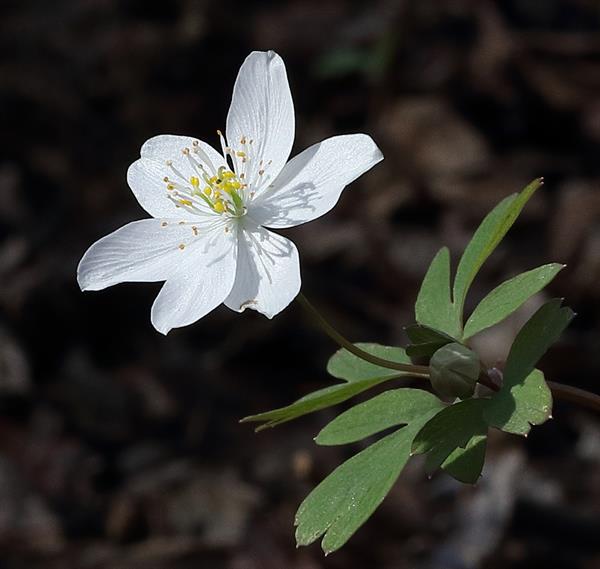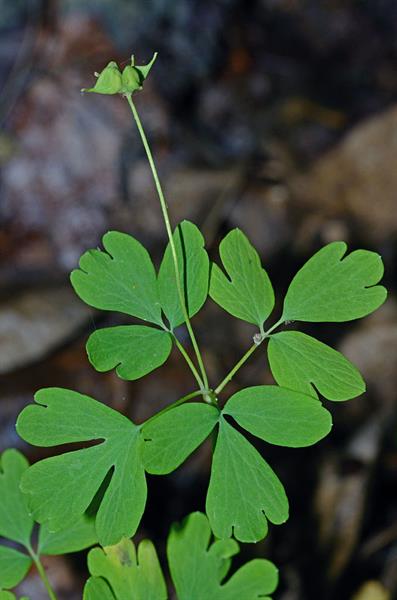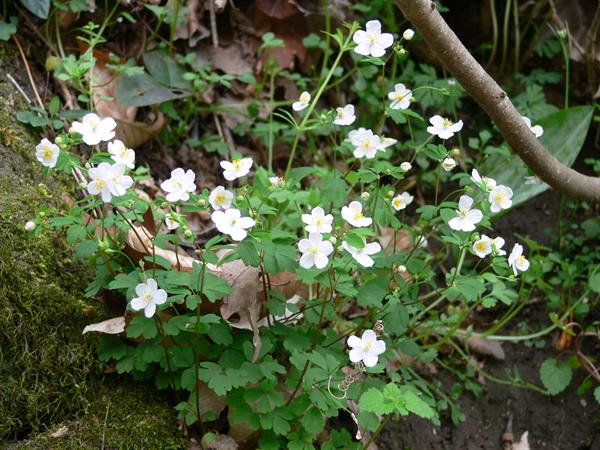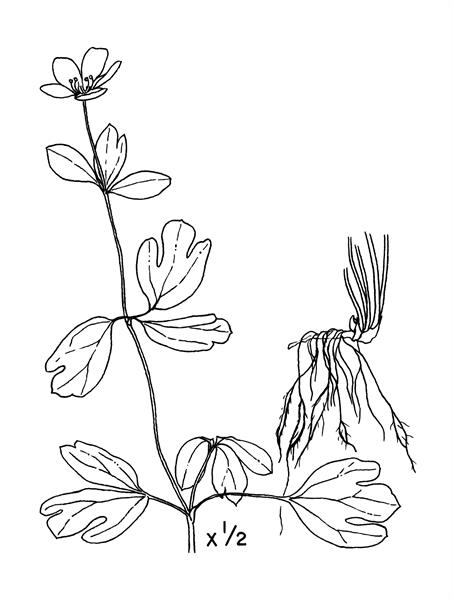
Origin/Endemic status: Native
Synonymy: = Ar, Fl2, FNA3, Il, K1, K3, K4, Mi, NY, Tn, Va, WH3; = Isopyrum biternatum (Raf.) Torr. & Gray – C, F, G, GrPl, RAB, S, S13, Tx; = n/a – Pa
Wetland Indicator Status:
- Atlantic and Gulf Coastal Plain: FACW
- Eastern Mountains and Piedmont: FACU
- Great Plains: FAC
- Midwest: FAC
- Northcentral & Northeast: FAC
Heliophily: 2
Hover over a shape, letter, icon, or arrow on the map for definition or see the legend.
 © Scott Ward | Original Image ⭷
© Scott Ward | Original Image ⭷ © Floyd A. Griffith | Original Image ⭷
© Floyd A. Griffith | Original Image ⭷ © Gary P. Fleming | Original Image ⭷
© Gary P. Fleming | Original Image ⭷ © Alan Cressler: Enemion biternatum, Stevens Creek Heritage Preserve, McCormick County, South Carolina 3 by Alan Cressler source
© Alan Cressler: Enemion biternatum, Stevens Creek Heritage Preserve, McCormick County, South Carolina 3 by Alan Cressler source © Keith Bradley | Original Image ⭷
© Keith Bradley | Original Image ⭷ © Bruce A. Sorrie | Original Image ⭷
© Bruce A. Sorrie | Original Image ⭷ © Scott Ward | Original Image ⭷
© Scott Ward | Original Image ⭷ © Scott Ward | Original Image ⭷
© Scott Ward | Original Image ⭷ © Radford, Ahles and Bell | Original Image ⭷
© Radford, Ahles and Bell | Original Image ⭷Feedback
See something wrong or missing on about Enemion biternatum? Let us know here: (Please include your name and email if at all complicated so we can clarify if needed.)
Cite as...